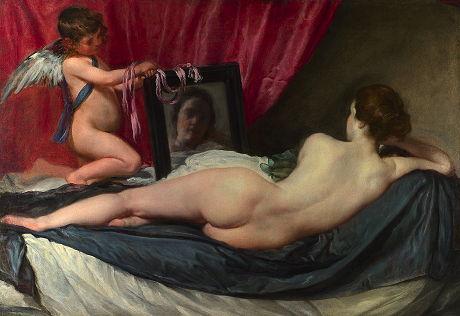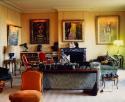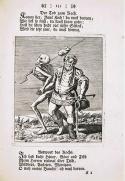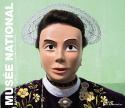Art Of The Day Weekly
#364 - from 6 November 2014 to 12 November 2014

Diego Velázquez, Venus at Her Toilet (Rokeby Venus), 1648–1651. Oil on canvas, 122,5 x 177 cm © London, The National Gallery
IN THE AIR
Velazquez, superstar of the 17th century
VIENNA – He has the upper-hand on the Google meter, with nearly 40 million quotes against 37 million for his closest rival, Rubens. With 23 million, Rembrandt is far behind while Poussin, the Franco-Roman hero of classicism does not get one million. And it seems the Andalusian master loses a few clicks due to the spelling of his name, with a “z” or an “s” according to the language used. Of course some will argue that Google is not –or not yet- the only criteria of how much a work of art is appreciated. Whatever the case, no one deny yet again with this new exhibit on Vienna –which will travel to Paris to be shown at the Grand Palais at the beginning the new year-, that Velazquez is up on the altar of the giants, next to Raffaello, Monet or Picasso. Some of his most famous creations –such as the Rokeby Venus from the National Gallery in London or Vulcan's Forge from the Prado but obviously not the Meninas from the same institution -, show a fine hand combined with an acute psychology that rarely come together at this level. He also demonstrates surprising universality. Portraits, genre scenes, mythological scenes, crowd effects or still lives: there isn’t a field in which he does not excel. What if Google were right?
• Velazquez at the Kunsthistorisches Museum, from 28 October 2014 to 15 February 2015.
EXHIBITIONS
Pop made in Germany
FRANKFURT – In 1963, in a butcher’s shop in Düsseldorf, a provocative exhibition presented for the first time “German Pop Art”. One of the two organisers, who would become famous, Gerhard Richter, is the first to use this name. It very soon brought together many other currents, in particular in Berlin, Munich and Frankfurt, which was then the most American city in Germany, since it hosted the US Army headquarters. German Pop Art used shampoo and instant coffee to portray consumer society and its mechanisms of alienation. But it also rejects abstract art as a means to settle accounts with the national-socialist figurative matrix. The retrospective with more than 150 works of art is the first in-depth exploration of the movement. It gives a large place to the leaders such as Bayrle and Klapheck, but it also enhances a lesser-known component, female artists such as Christa Dichgans or Bettina von Arnim.
• German Pop at the Schirn Kunsthalle, from 6 November 2014 to 8 February 2015.

Interior of Jacqueline Delubac's home, view of the large living-room, colour photograph, private collection. (c) DR
The two lives of Jacqueline Delubac
LYON – She was one of the fetish actresses in the interwar period, a role her marriage to Sacha Guitry made possible. But Jacqueline Delubac (1907-1997), considered one of the most elegant women of her time (loyal for a long time to Paquin, in the 60s she wore the audacious geometric dresses designed by Pierre Cardin), was also an enlightened art lover. Following the French Liberation, she ended her career on stage and in front of the cameras to regularly visit art galleries and auction houses. She sold her jewels to buy a Dufy, and at the age of 75 fell for a work by Francis Bacon. Little by little she brought together an original art collection. Shortly before her unforgettable death –she died from an accident with a bicycle-, she bequest it to the musée des Beaux-Arts in Lyon. The exhibition does not limit itself to present these nearly thirty works but also brings in others that had gone through her hands, and it recreates her apartment on quai d’Orsay, where the walls, from the corridor all the way to her dressing room were covered with paintings.
• Jacqueline Delubac, le choix de la modernité at the musée des Beaux-Arts, from 7 November 2014 to 16 February 2015.
The Guggenheim eye
BILBAO – The title « L’art de notre temps » (Art of our time) is to be interpreted in the larger sense since the time it refers to lasts one hundred years. The exhibition brings together master pieces from the Guggenheim collections and retraces an ideal itinerary of art of the 20th century. Like in Dante's Inferno, it unfolds in concentric circles: on the third floor, the origins with the Cubists, Rothko and Chillida, on the second floor Pop Art, conceptual art and, finally, on the first floor the current avant-gardes, opened towards China, the Near-East, Latin America and video.
• El arte de nuestro tiempo at the Guggenheim Bilbao, from 23 October 2014 to 25 May 2015 (1st and 2nd floors until 3 May 2015).
AUCTIONS

Lot 177, Mathieu Merian, La Danse des morts comme elle est dépeinte dans la ville de Basle, Basel, Jean Rudolphe Im-Hof, 1744. Estimatie: €2000-2500.
Guaita, a taste for mystery
PARIS – Sales have a very good aspect, which is that sometimes they bring back to life extraordinary persons who have long ago fallen into oblivion. It is the case of Stanislas de Guaita, a colleague of Barrès at the school of Nancy, who took one too many psychotropic substances and died much too young, at the age of 36, in 1897. He had inherited a solid family fortune and had the time nevertheless to build a remarkable collection of books on the occult. Magnetism, spiritism, black magic or simply utopia: through his love for books he explored all these fields, from Utopia by Thomas More in an edition from 1550 to the work by Jacques Duval, Hermaphrodites (1612), up to Discours admirable d’un magicien de la ville de Moulins (1623). This sale is a surprising second chance since the Guaita collection had already been scattered in 1899, before being patiently and partially rebuilt by one of the heirs.
• Voyage à travers les sciences occultes, livres provenant de la bibliothèque Stanislas de Guaita at Piasa’s, 7 November 2014.
BOOKS
France without a face
It is not often one sees a foreword by Houellebecq. Here, he attacks a motionless France where the French limit themselves “to be French”. In a homogenized world, the only way of maintaining traditions is to stage the people in a decor that is as easy to read as a cliché. Artist Marc Lathuillière uses both objectivity and mockery to prove this. To do so he has cut the faces of his models (or rather covered them with a mask) and encircled them with obvious symbols: a sheep for a livestock producer, jars for the jam maker, the marble room in an official building for an intern of the ENA (the French national school of administration). This leads to the creation of a cemetery of losers in a nation that is running to its ruin. Is this loss of references, this uniformity, this desperate search for fake roots, unique to France? From the American redneck in a checkered lumber jack shirt to the Masaï herdsman in a red blanket, including the Spanish female singer with her castanets, our huge show society is a relentless producer of icons.
• Musée national, by Marc Lathuillière, La Martinière, 2014, 216 p., €49.
IN BRIEF
ABU DHABI – The Abu Dhabi Art contemporary art fair will be held from 5 to 8 November 2014.
PARIS – The 20th edition of the International Heritage Fair (Salon international du patrimoine) will be held at the Carrousel du Louvre from 6 to 9 November 2014.
PARIS - Pierre Daix, biographer and specialist of Picasso, died on 2 November at the age of 92.
TORINO - The modern and contemporary art fair, Artissima, will be held at the Lingotto from 7 to 9 November 2014.
OPENINGS OF THE WEEK
6 November 2014 - BRUSSELS - Le Botanique
The multidisciplinary artist, born in 1969, presents a seductive series of drawings in black and white

